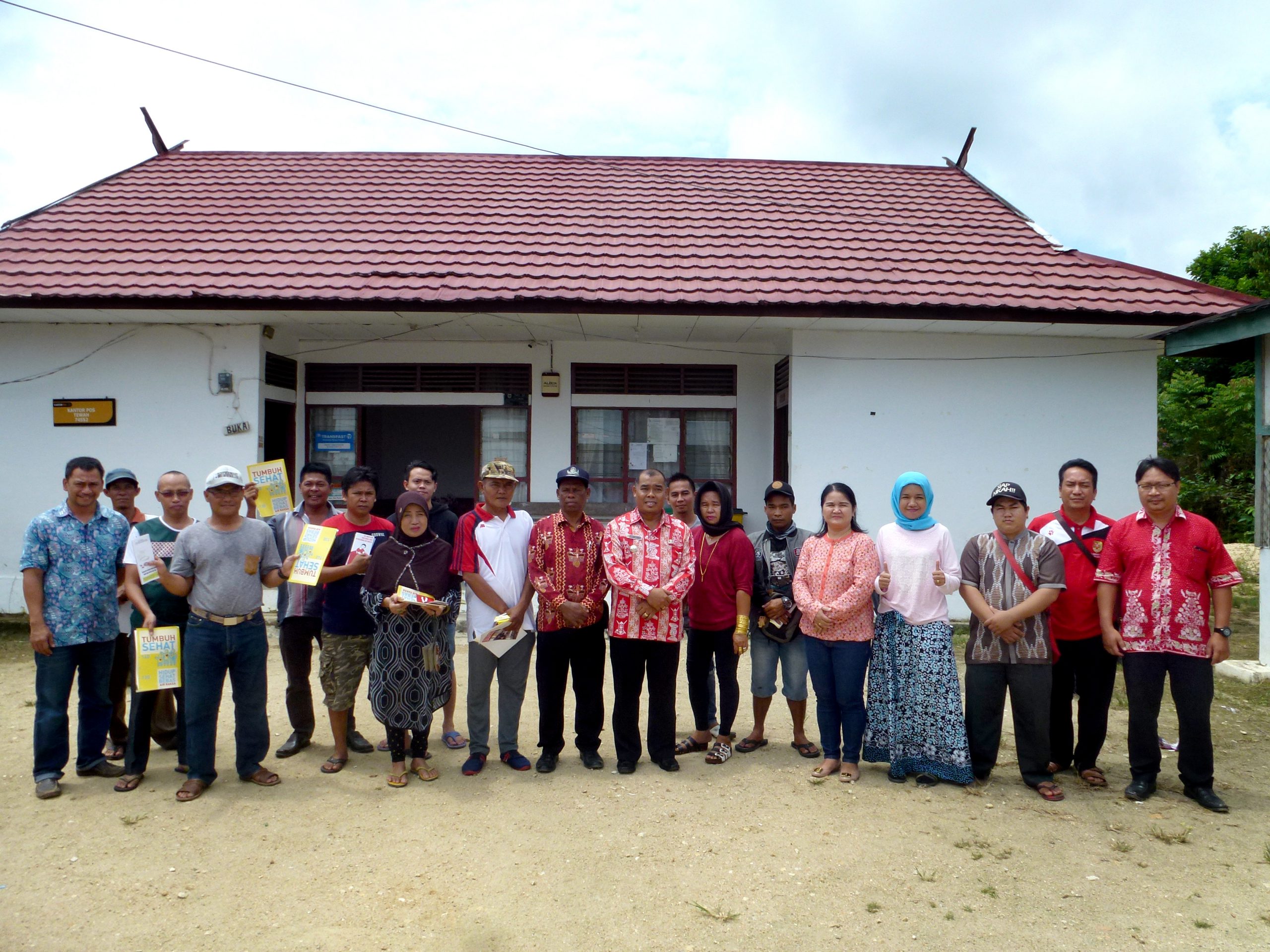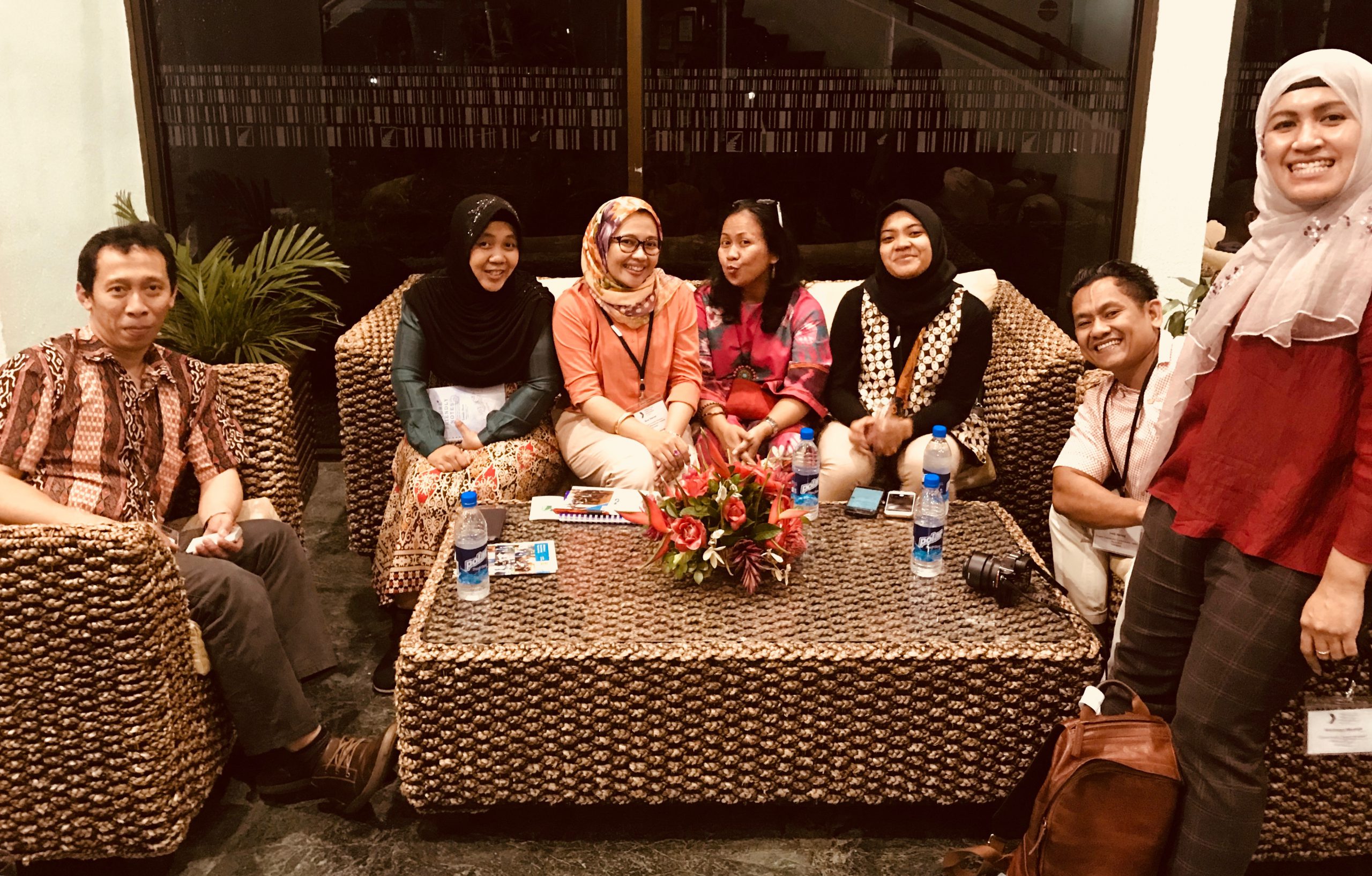 What a terrific team! Seven of the eight founding members of WiME (Women in Mining and Energy) in Indonesia. (left to right : Omar, Dian, Budi, Nukila, Khoirun, Dedy and Maya)
What a terrific team! Seven of the eight founding members of WiME (Women in Mining and Energy) in Indonesia. (left to right : Omar, Dian, Budi, Nukila, Khoirun, Dedy and Maya)
Jan. 2019–This month, a new initiative, Women in Mining and Energy (WiME), was launched in Indonesia. Congratulations to the founders (pictured above), who include Budi Susilorini, Pure Earth’s Indonesia country director, along with a group of professionals linked through the Minerals and Energy for Development Alliance. The goal of the initiative is to increase the participation of women in the sector, and ultimately to promote equal rights, opportunities and benefits for both men and women to help them pursue sustainable livelihoods in mining and energy. Pure Earth will host this strategic hub.
Why is this important?
Because women hold the key to change in many communities. Budi explains in this report about our work in Indonesia with artisanal gold miners to reduce mercury poisoning.
Women artisanal miners in Central Kalimantan: A brief portrait
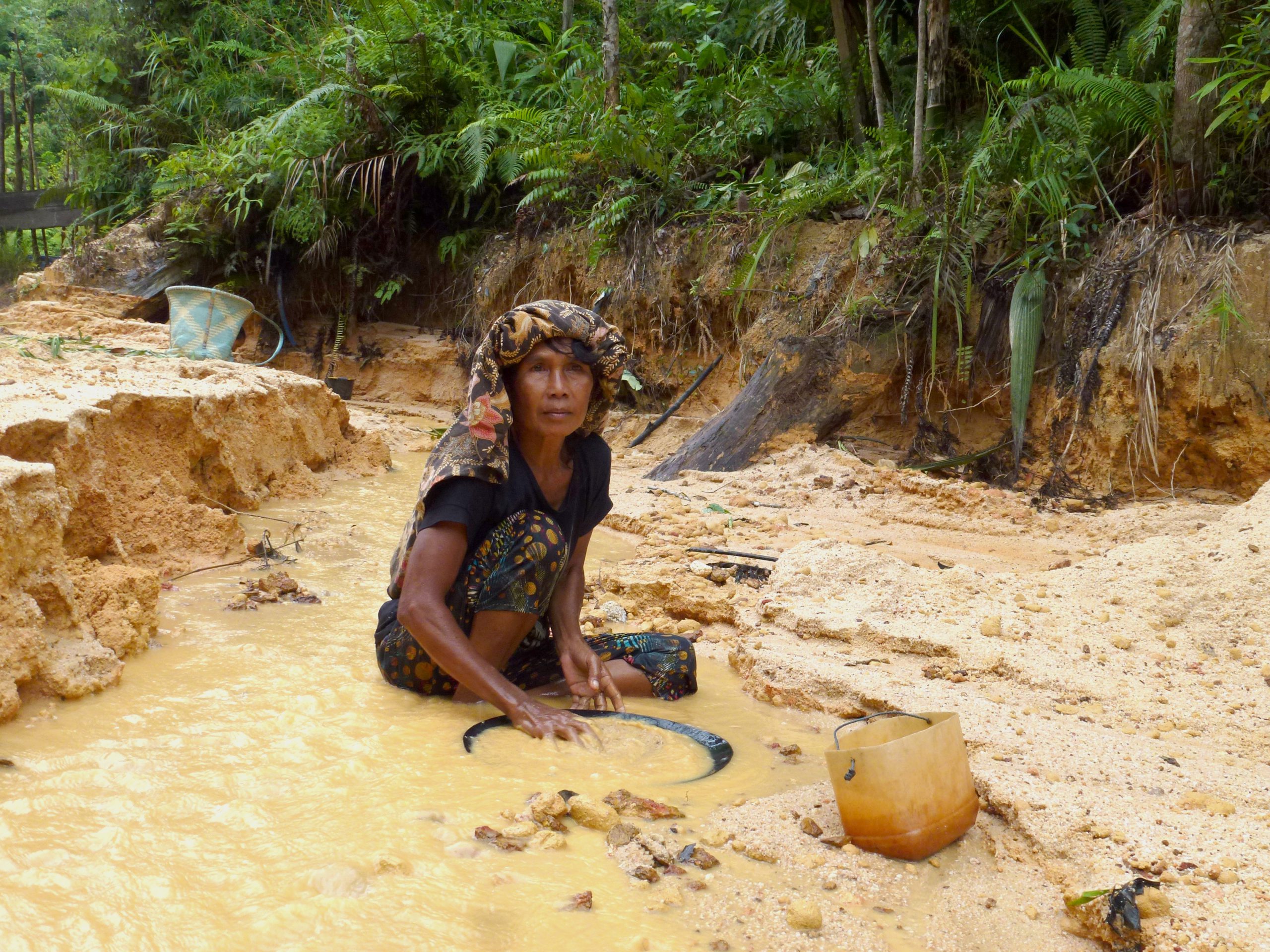 A woman miner in Sumur Mas, Indonesia.
A woman miner in Sumur Mas, Indonesia.
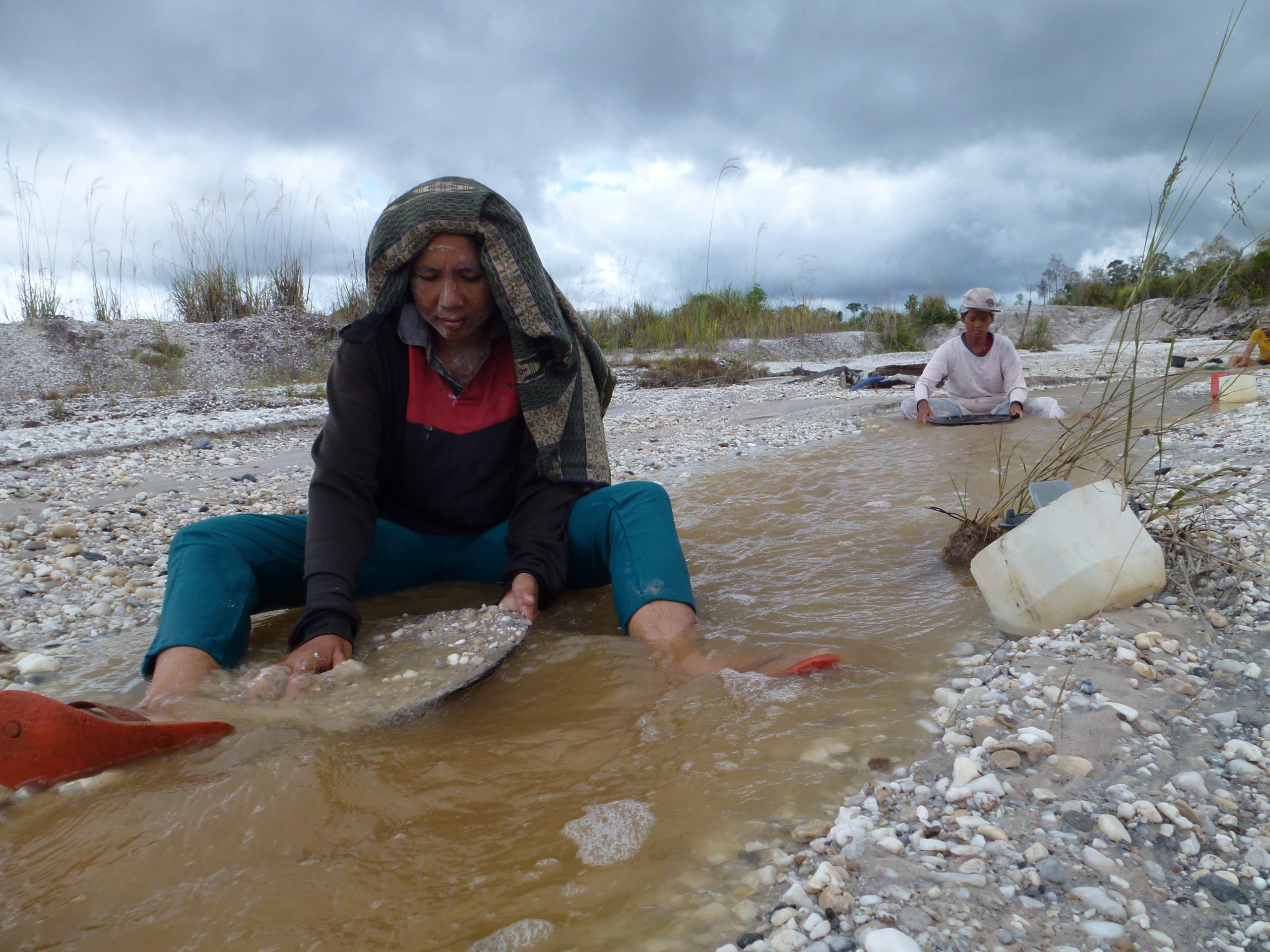 Miners in Tewang Pajangan, Indonesia
Miners in Tewang Pajangan, Indonesia
In Tewang Pajangan village, Central Kalimantan, the number of male miners is 240 on average, compared to less than 15 women miners. But the women who mine contribute more to the family income.
Male miners rely on using large machines, which are costly, as they consume a lot of expensive fuel. Moreover, research from our local partner, Indonesian NGO Yayasan Tambuhak Sinta (YTS), shows that men spend more of their income on cigarettes and food they consume at the mine site, whereas, women usually bring a lunch box from home. Thus, men’s expenses are out of balance with their income. This means they have an uncertain income, whereas women miners, who do manual panning, have a more consistent and reliable income.
Women miners can earn a net income of IDR 100,000 per day for 4-5 working hours. The women mine after finishing doing house chores and taking care of their children. Male miners earn a net income of IDR 100,000-150,000 per day on average, but do not work every day. Thus, women contribute more to the family in terms of income, along with their role and responsibility in taking care of the family.
The Mercury Issue
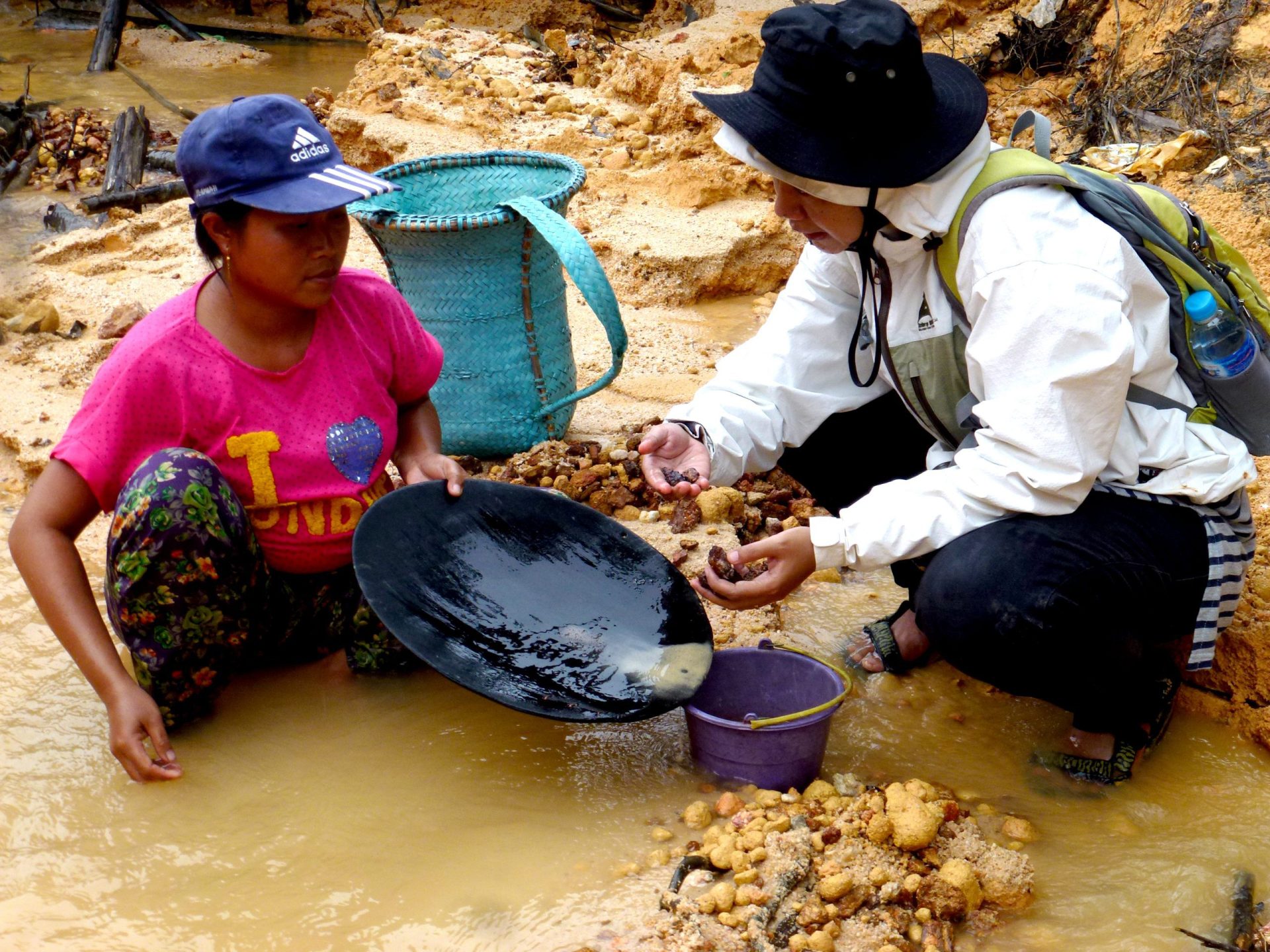 A trainer shows a miner how to improve her panning method to help her extract more gold without mercury.
A trainer shows a miner how to improve her panning method to help her extract more gold without mercury.
Artisanal and small-scale miners use mercury to extract gold. However, only very few miners are aware that using mercury is dangerous and contaminates the environment–soil, air, and especially the river, on which they are dependent for daily activities, such as bathing and washing, and where the fish they consume may be contaminated by mercury.
[NOTE: About 20% of the world’s gold comes from artisanal miners. Artisanal gold mining is the largest global source of mercury emissions.]
In response to this problem, the use of mercury has been drawing worldwide concern in recent years. The Minamata Convention entered into force globally in August 2017. Indonesia has ratified the convention and the President has released a decree banning the use of mercury, especially in small-scale gold mining. Pure Earth has worked in collaboration with our local partner YTS since 2009 to help artisanal gold miners reduce their use and exposure to toxic mercury in Indonesia.
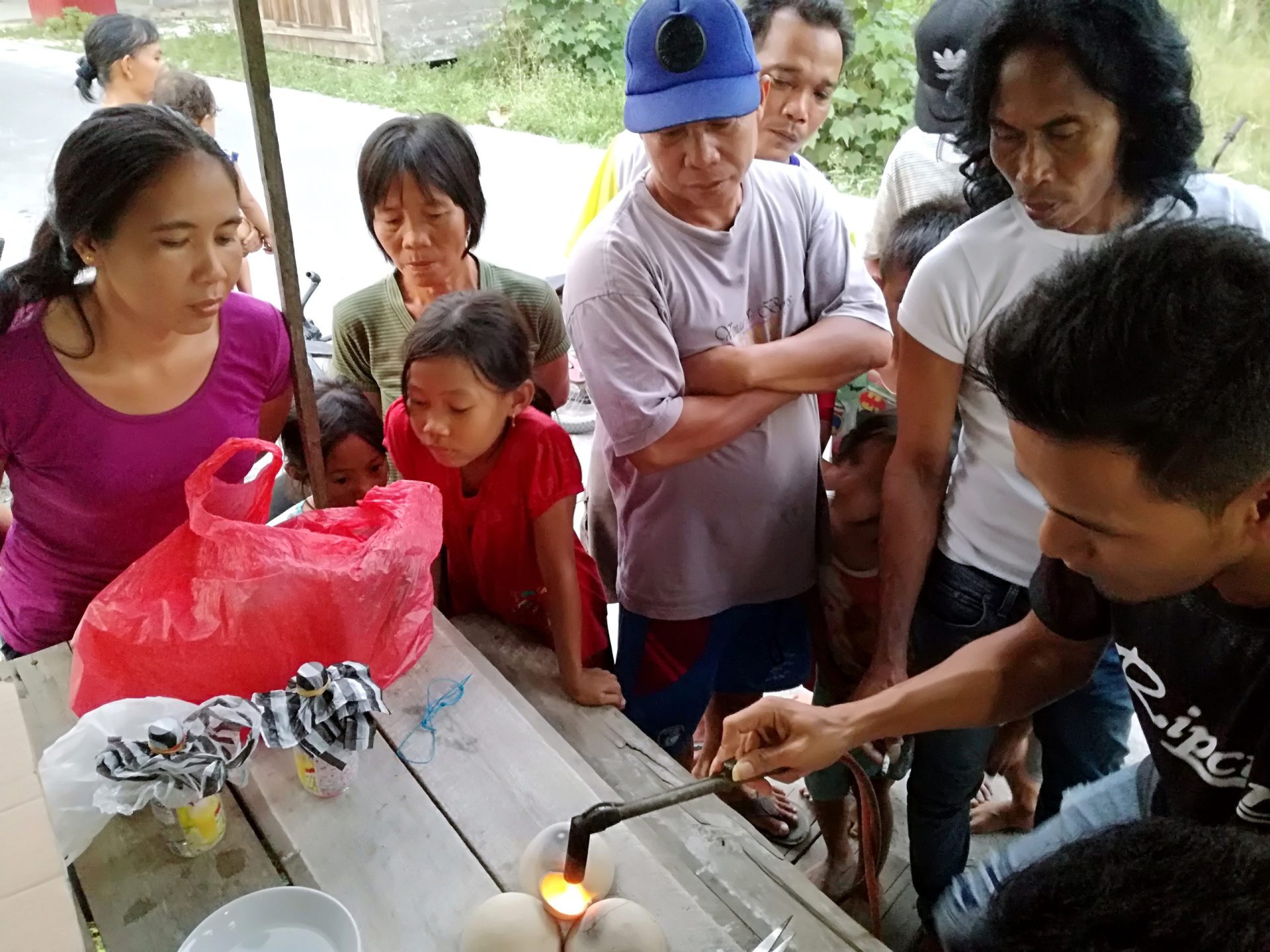 Demonstrating a method to extract gold without mercury.
Demonstrating a method to extract gold without mercury.
Our early efforts with YTS included the use of a technology to recapture mercury vapor released into the atmosphere using retorts and water box condensers.
In addition, YTS introduced the use of specially-adapted sluice boxes, which help miners extract more gold without mercury, and implemented an awareness-raising campaign on mercury hazards for male and female miners, school children and miners’ wives.
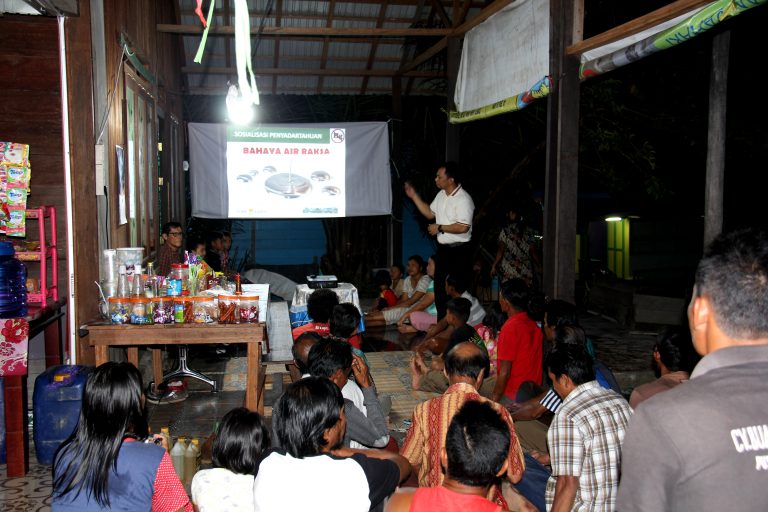
Teaching the community about the dangers of mercury, and how to protect themselves.
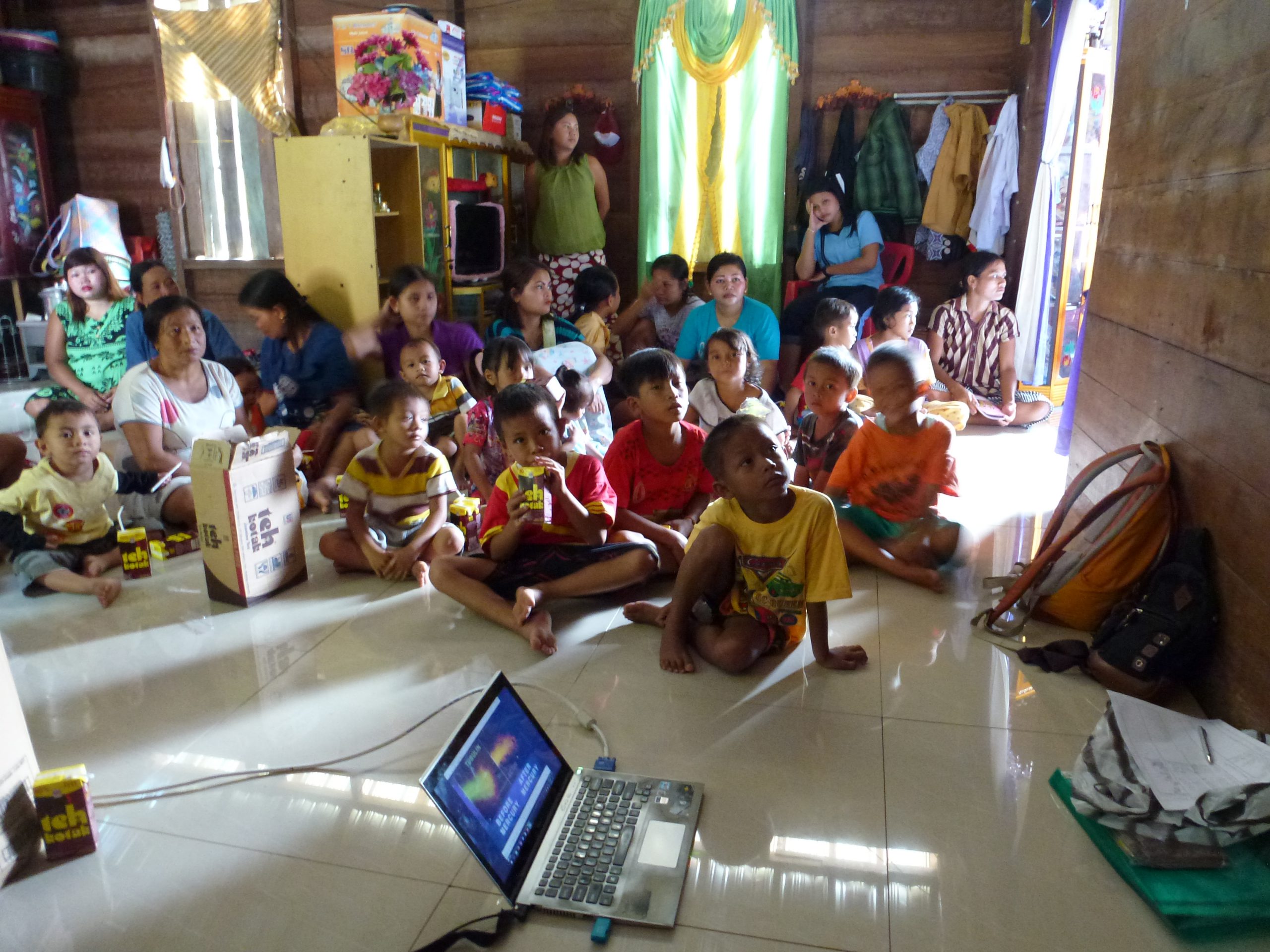
Connecting Women Miners to Jewellers
Our team’s efforts to empower women miners began in early 2018 when the YTS field team met with women miners and the village government in Tewang Pajangan village in Gunung Mas district, Central Kalimantan, to discuss establishing a Women’s Working Group for women panners.
The idea was to connect women miners directly with jewellers in Bali who would like to purchase mercury-free gold at a higher market price. Currently, Sanur Jewellery Studio in Bali has confirmed its willingness to buy mercury-free gold at a price 20% higher than the market rate.
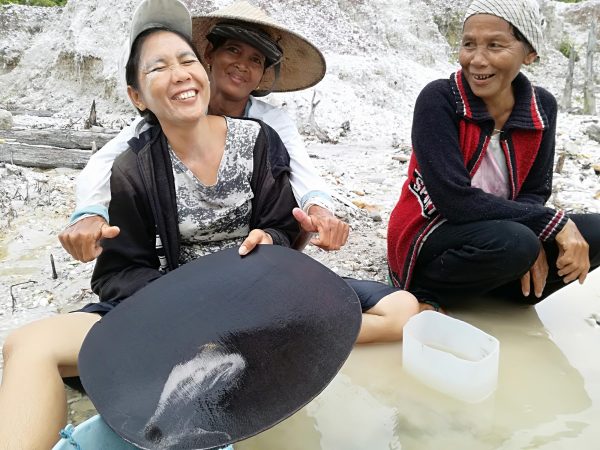 Leaders of the Women’s Working Group: (left to right) Gold miners Ibu Leni (holding pan), Ibu Iceng and Ibu Gineng.
Leaders of the Women’s Working Group: (left to right) Gold miners Ibu Leni (holding pan), Ibu Iceng and Ibu Gineng.
Leni Marlina, Gineng, and Iceng were assigned to be the administrators for the group. The three women are champions of mercury-free mining. In May 2018, YTS helped the group test gold processing using direct smelting, a method that does not use mercury. The results were checked by a gold craftsman, H. Fauzi, and showed that the purity of the gold was 92-93%. YTS purchased the gold and will sell it to the jeweller in Bali. This success was then shared with other women miners in the village in the hope that more would try mining and processing without the use of mercury.
Together with the village government, YTS also conducted a demonstration using a sluice box in different alluvial mining areas, and explained the similarities and differences between sluice boxes that are commonly used by local miners.
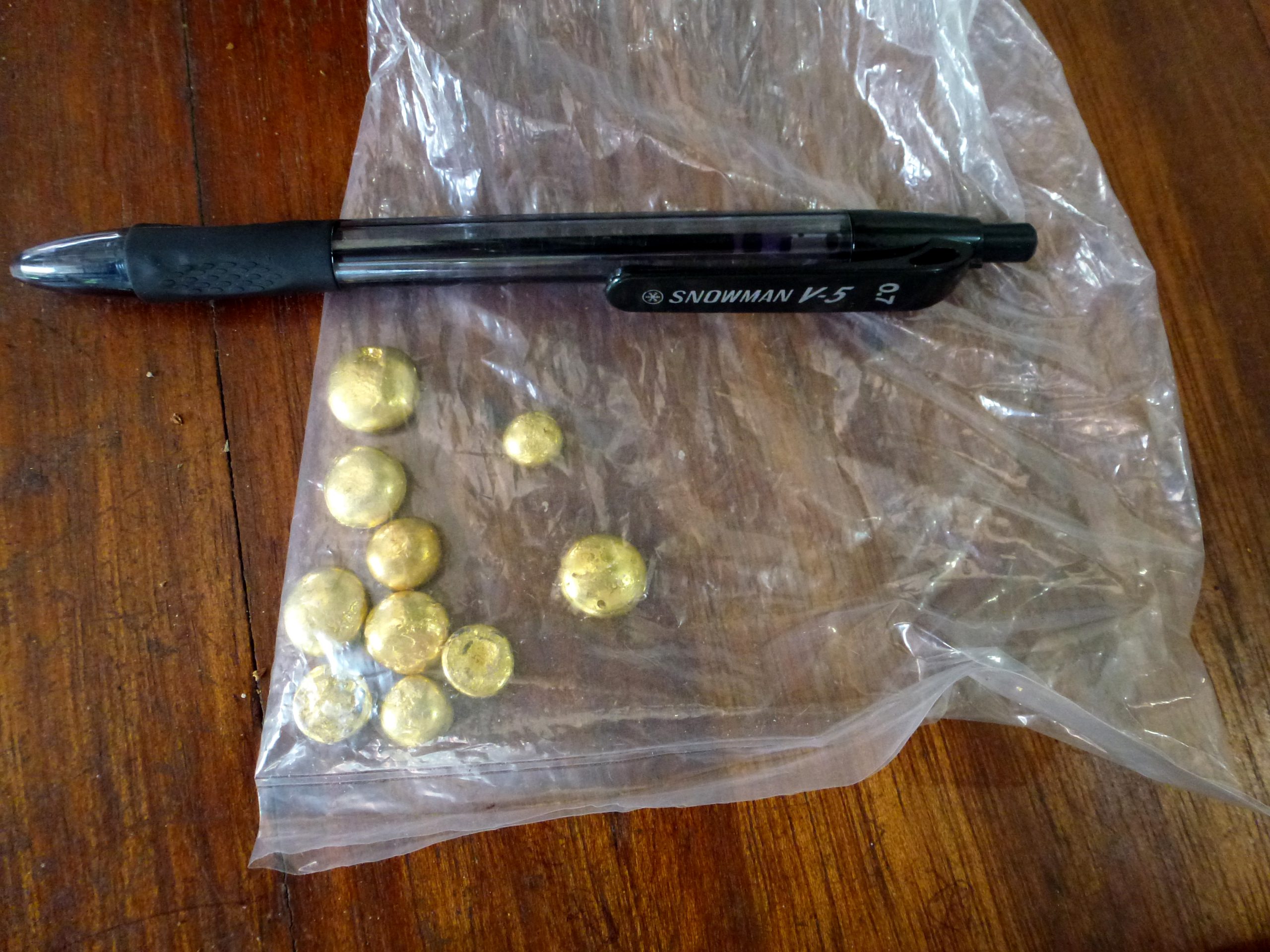 Gold extracted without the use of mercury
Gold extracted without the use of mercury
Iceng is the only woman miner in the village who uses a sluice box to improve her gold recovery. She shared her practice with other women, explaining how she obtained better results with this method over other ways. Manual sluicing can produce 300-500 mg of gold within 2-3 working hours, whereas mechanical sluicing can produce 500-800 mg within 6-8 working hours, using 10 liters of fuel. Panning yields 100-400 mg of gold on average within 4-5 working hours.
Artisanal and small-scale gold mining practices that avoid using mercury–such as panning, direct smelting, and the use of sluice boxes–are best practices compared with gold mining using mercury, which damages health and the environment. YTS is conducting trials, evaluating the outcomes, and will continue to train miners in mercury-free methods. These activities will be followed up by discussions on other development opportunities.
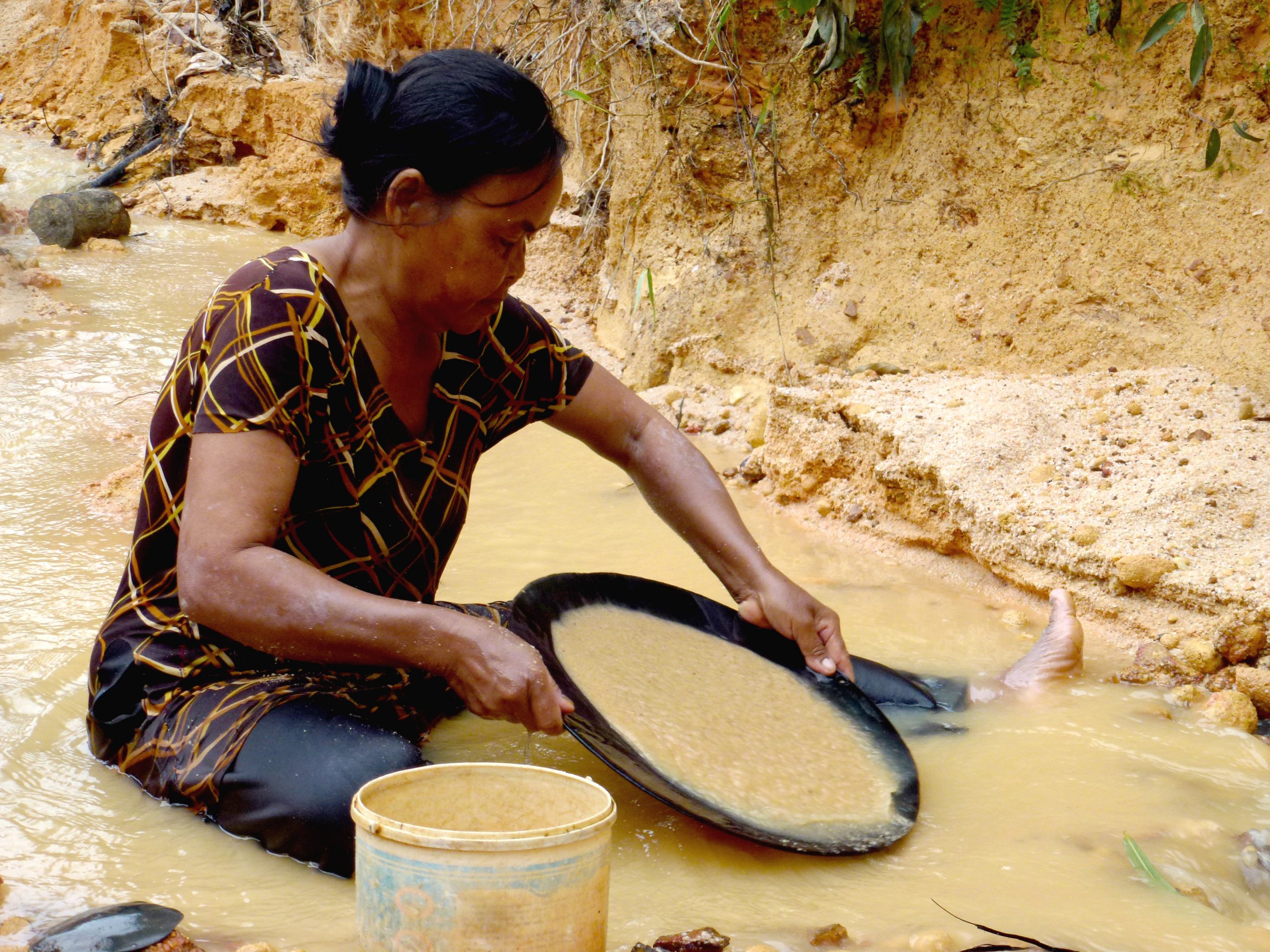 A woman panning for gold in Sumur Mas, Indonesia.
A woman panning for gold in Sumur Mas, Indonesia.
A Hopeful Future
All of these activities will bring about positive improvements to the lives of women miners, and also to the community and the environment. Not only are the mercury-free techniques helping to increase miners’ gold recovery, but the negative environmental impact is also lessened since the tailings from the sluice box (which are NOT contaminated by mercury) can now be placed back into former mining areas in the hope that it will help rehabilitate unproductive mining lands and protect the local streams and rivers.
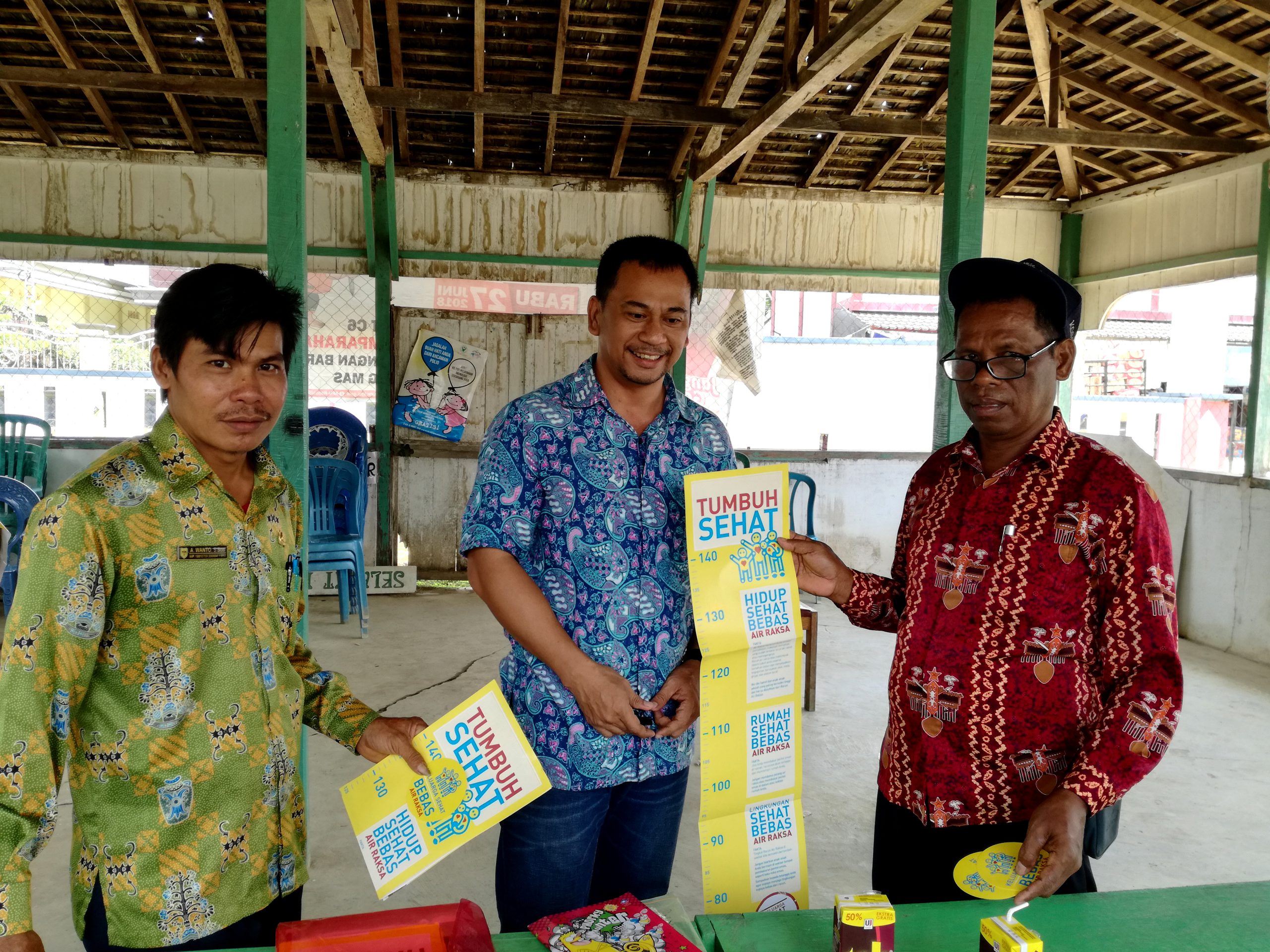 The pamphlet reads “Grow Healthy”
The pamphlet reads “Grow Healthy”
Working in groups is a project requirement, and this is something new that the women are just started to learn, as they mainly have been working individually.
Allowing artisanal miners to continue to use mercury means enabling this harmful practice to generate a toxic time bomb. The use of this toxic substance, which causes environmental health risks to the future lives of women and children, needs to be solved immediately. We need to encourage mercury-free gold practices that use environmentally friendly ways to process gold.
The artisanal and small-scale women gold miners who avoid using mercury in Indonesia and elsewhere are mining superheroes who are fighting for a better future. We must recognize and appreciate their awareness and action in practicing mercury-free gold mining.
All photographs courtesy of YTS. 